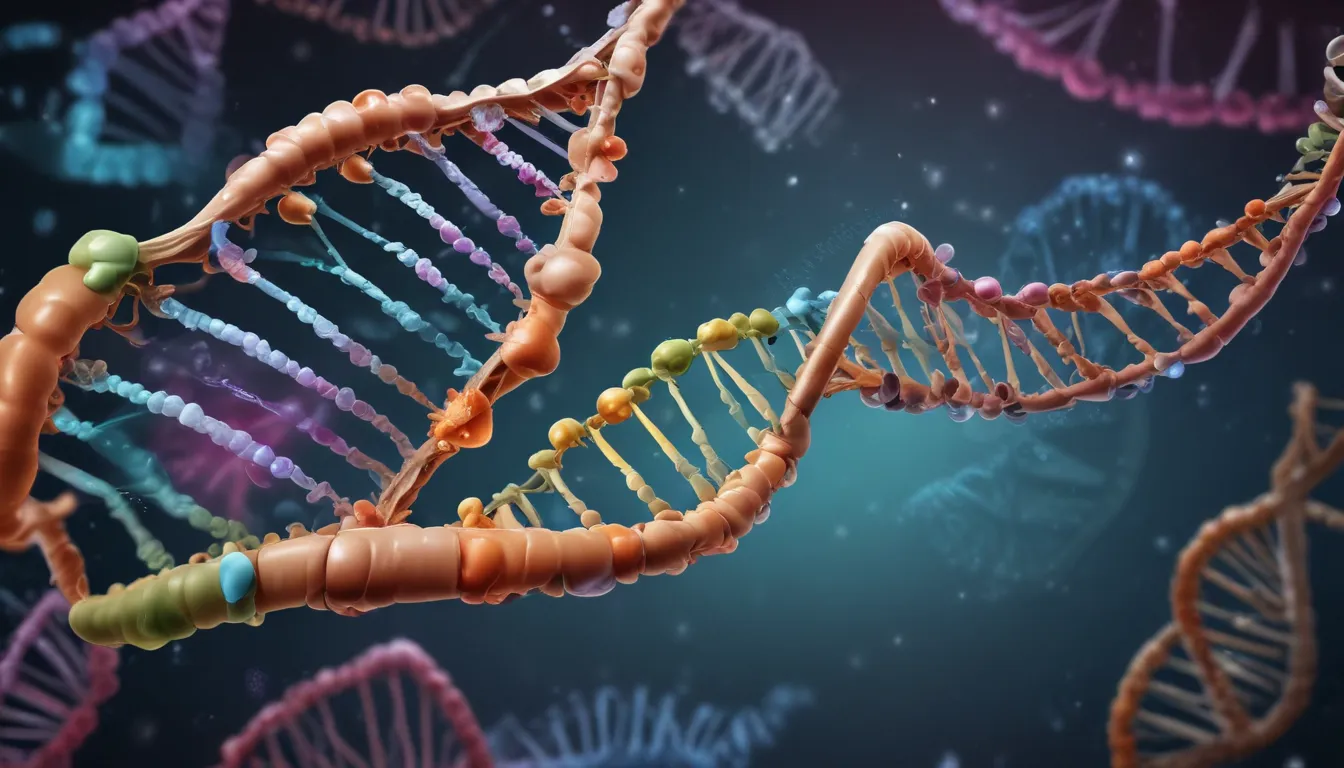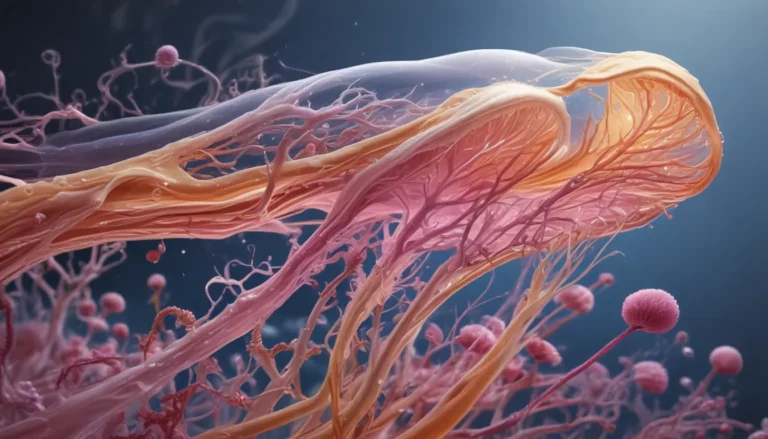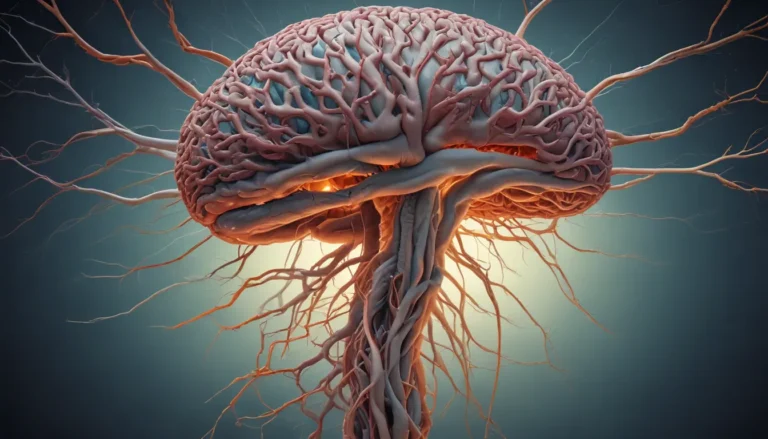A Note About Images: The images used in our articles are for illustration purposes only and may not exactly match the content. They are meant to engage readers, but the text should be relied upon for accurate information.
DNA transcription is a captivating process that serves as the foundation of genetics and molecular biology. It involves the conversion of DNA into RNA, facilitating the transfer of genetic information within a cell. While seemingly straightforward, DNA transcription harbors numerous intricate details that make it truly extraordinary. From the discovery of transcription to the critical role of RNA polymerase, there is a wealth of knowledge waiting to be uncovered. In this comprehensive guide, we will delve deep into the realm of DNA transcription and unveil 13 unbelievable facts that will broaden your understanding of this fundamental biological process. Join us on a journey to explore the complexities and elegance of DNA transcription, where you will gain insight into the remarkable mechanisms that drive life as we know it.
Decoding the Genetic Blueprint: DNA Transcription Explained
DNA transcription stands as the fundamental process through which genetic information encoded in DNA is transcribed into RNA. This pivotal step sets the stage for the translation of RNA into proteins, essential for the structure and function of living organisms. Simply put, DNA transcription serves as the initial phase in deciphering the genetic blueprint of life.
The Catalyst of Transcription: RNA Polymerase Unveiled
At the core of DNA transcription lies an indispensable enzyme known as RNA polymerase. This remarkable catalyst binds to a specific region of DNA called the promoter, unwinds the DNA double helix, and synthesizes a complementary RNA strand based on the DNA template.
The Three Key Stages of DNA Transcription Unveiled
DNA transcription unfolds through three distinct stages: initiation, elongation, and termination. During initiation, the RNA polymerase recognizes and binds to the promoter region, marking the onset of transcription. The elongation phase sees the polymerase traverse the DNA template, synthesizing an RNA transcript. Finally, termination occurs when the RNA polymerase reaches a specific sequence, signaling the conclusion of transcription.
Unveiling the Mysteries of Genetic Code and RNA Splicing
Following transcription, the RNA transcript undergoes RNA splicing, a process wherein non-coding introns are excised, and coding exons are spliced together to form a mature RNA transcript. This meticulous procedure ensures that the final RNA molecule carries only pertinent coding information for protein synthesis.
Transcription Factors: The Maestros of Gene Expression
Transcription factors, instrumental proteins in regulating gene expression, bind to specific DNA sequences. These molecular conductors govern the initiation and control of transcription, playing a pivotal role in orchestrating gene expression in response to cellular and environmental cues.
Promoter Recognition: An Intricate Ballet of Proteins and DNA
The precise recognition and binding of the promoter region by RNA polymerase and transcription factors are paramount for effective transcription. This elaborate interaction involves myriad protein-DNA interactions, including hydrogen bonding and electrostatic attractions, ensuring the accuracy and specificity of transcription initiation.
The Transcription Bubble: Where the Magic Happens
During transcription elongation, the formation of the transcription bubble occurs. This structure comprises a region where the DNA double helix unwinds, enabling the RNA polymerase to transcribe the DNA template. The size of the transcription bubble varies based on transcription rate and external factors.
Transcription Velocity: A Remarkable Speed Demon
The pace at which RNA polymerase travels along the DNA template during transcription is truly astonishing. Prokaryotes exhibit a rapid rate of around 40 nucleotides per second, while eukaryotes move slightly slower at about 20 nucleotides per second.
Transcriptional Pause and Backtracking: Navigating Obstacles
During transcription elongation, RNA polymerase may encounter impediments or pauses due to DNA damage or regulatory signals. In response, it can backtrack along the RNA transcript, proofreading and rectifying any errors to maintain the fidelity of the genetic code.
The Journey of Nascent RNA: A Work in Progress
The nascent RNA refers to the molecule actively synthesized during transcription, carrying genetic information encoded in the DNA template. Further processing is necessary before this molecule can be translated into functional proteins, holding the promise of biological marvels.
Fine-Tuning Gene Expression through Transcriptional Regulation
Through a sophisticated regulatory network, transcriptional processes are meticulously fine-tuned to govern gene expression. Transcription factors, DNA modifications, chromatin structure, and environmental signals collectively regulate which genes are transcribed, when they are transcribed, and at what rate.
Embracing the Herculean Task of Transcription in the Human Genome
The human genome boasts approximately 20,000-25,000 protein-coding genes, making the coordinated transcription of these genes a formidable challenge. A harmonious interplay of transcription factors, RNA polymerases, and accessory proteins is essential to ensure precise expression of the vast genetic information.
Unraveling Disease Mechanisms through Transcription: A Vital Pursuit
Disruptions in the transcriptional machinery are implicated in various diseases, underscoring the importance of understanding these mechanisms. Exploring targeted approaches such as small molecule inhibitors or gene therapies holds promise in restoring normal transcriptional processes in disease contexts.
The Enigmatic World of DNA Transcription: A Gateway to Discovery
The 13 astounding facts about DNA transcription explored here provide but a glimpse into the captivating realm of genetic regulation and molecular biology. This intricate process not only sustains life but also serves as a cornerstone for comprehending the complexities of existence. As scientists continue to unveil the mysteries of DNA transcription, the horizon of new discoveries beckons, paving the way for breakthroughs in medicine, biotechnology, and our comprehension of the natural world.
Delving Deeper: A Conclusion on the Marvels of DNA Transcription
In conclusion, DNA transcription emerges as a riveting process underpinning the functionality of living organisms. From its inception in the mid-20th century to the groundbreaking advancements in gene expression comprehension, the realm of DNA transcription has revolutionized biological studies. Through the intricate unwinding and copying of genetic information, DNA transcription lays the groundwork for protein synthesis, ultimately shaping an organism’s traits and characteristics. The profound understanding of this process has catalyzed progress in medical research, gene therapy, and even forensic science. As we embark on a quest to unravel the intricate tapestry of DNA transcription, the allure of discovery beckons, unveiling the precision and intricacy of a process that underpins life itself.
FAQs: Exploring Key Questions on DNA Transcription
-
What is DNA transcription?
DNA transcription entails the conversion of genetic information from DNA into RNA, serving as the initial step in gene expression and the synthesis of messenger RNA (mRNA). -
How does DNA transcription occur?
During transcription, one DNA strand unwinds, and RNA polymerase synthesizes an mRNA from the exposed template, carrying genetic information to ribosomes in the cytoplasm. -
What role does RNA polymerase play in DNA transcription?
RNA polymerase is responsible for transcribing RNA from a DNA template, recognizing promoters, initiating transcription, and aiding in elongating RNA molecules. -
Are there disparities between prokaryotic and eukaryotic DNA transcription?
Prokaryotic and eukaryotic transcription vary notably, with prokaryotes transcribing in the cytoplasm and eukaryotes within the nucleus, necessitating diverse transcription factors and chromatin remodeling. -
How does DNA transcription contribute to genetic disorders?
Transcription errors or mutations can lead to genetic disorders by altering DNA sequences, resulting in abnormal mRNA production and flawed protein synthesis with significant impacts on an organism’s health. -
Is DNA transcription amenable to manipulation or control?
Various mechanisms, including transcription factors, DNA methylation, and histone modifications, allow for the regulation of gene transcription, affording cells the ability to determine which genes are transcribed and when. -
What impact has DNA transcription had on medical research?
Advancements in DNA transcription understanding have revolutionized medical research, facilitating gene therapy development, discovery of disease-causing mutations, and identification of potential drug targets that unravel human health complexities. -
Is DNA transcription synonymous with DNA replication?
DNA transcription and replication are distinct processes; replication involves complete DNA copying, while transcription selectively copies DNA segments for RNA production. -
Can DNA transcription be reversed?
While DNA transcription is typically unidirectional, reverse transcription processes can occur in certain viruses, converting RNA genomes back into DNA through reverse transcriptase enzymes. -
What applications derive from studying DNA transcription?
The study of DNA transcription finds diverse applications including understanding genetic disease mechanisms, developing targeted therapeutics, enhancing crop yield through genetic manipulation, and deciphering species evolutionary histories.
Discover the Intricacies of DNA Transcription
Embark on a journey through the breathtaking world of DNA transcription, where each fact and detail weaves a narrative of biological wonders waiting to be uncovered. Transcription factors, the unseen influencers of cellular processes, hold the key to orchestrating the symphony of life. Immerse yourself in the enthralling realm of molecular biology and witness the marvels of intricate mechanisms that breathe life into existence.
Embrace Knowledge with Us
At our core, we are dedicated to delivering factual and engaging content that resonates with your thirst for knowledge and curiosity. Our commitment to upholding the highest standards of accuracy and reliability ensures that every fact you encounter is not only captivating but also rooted in authenticity. Trust in our pursuit of quality and authenticity as you journey with us to explore, learn, and broaden your horizons.






